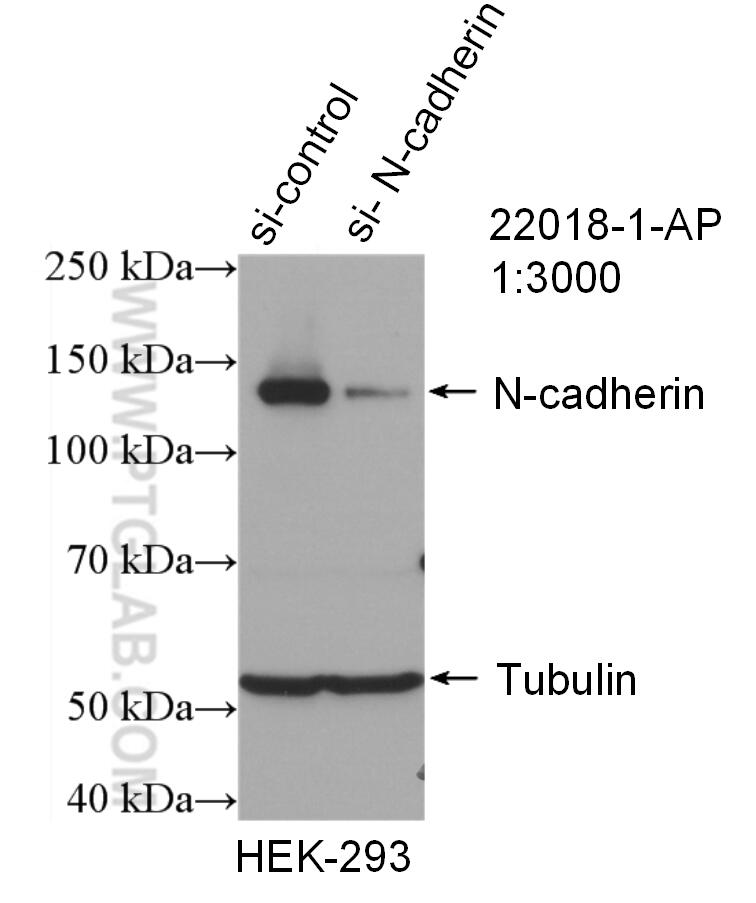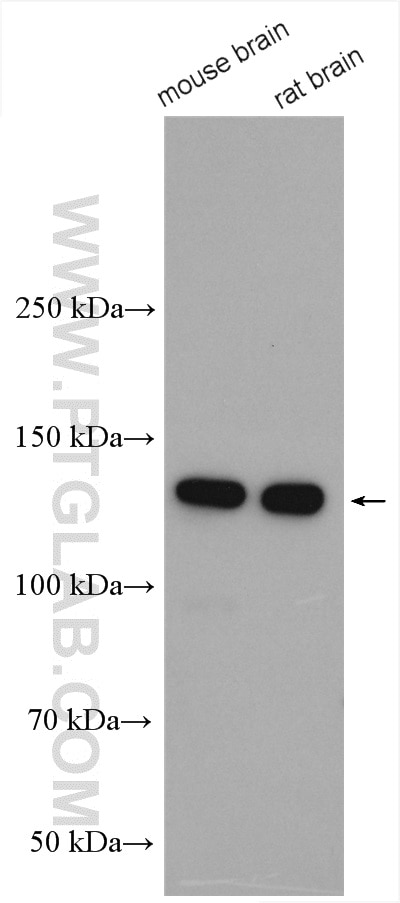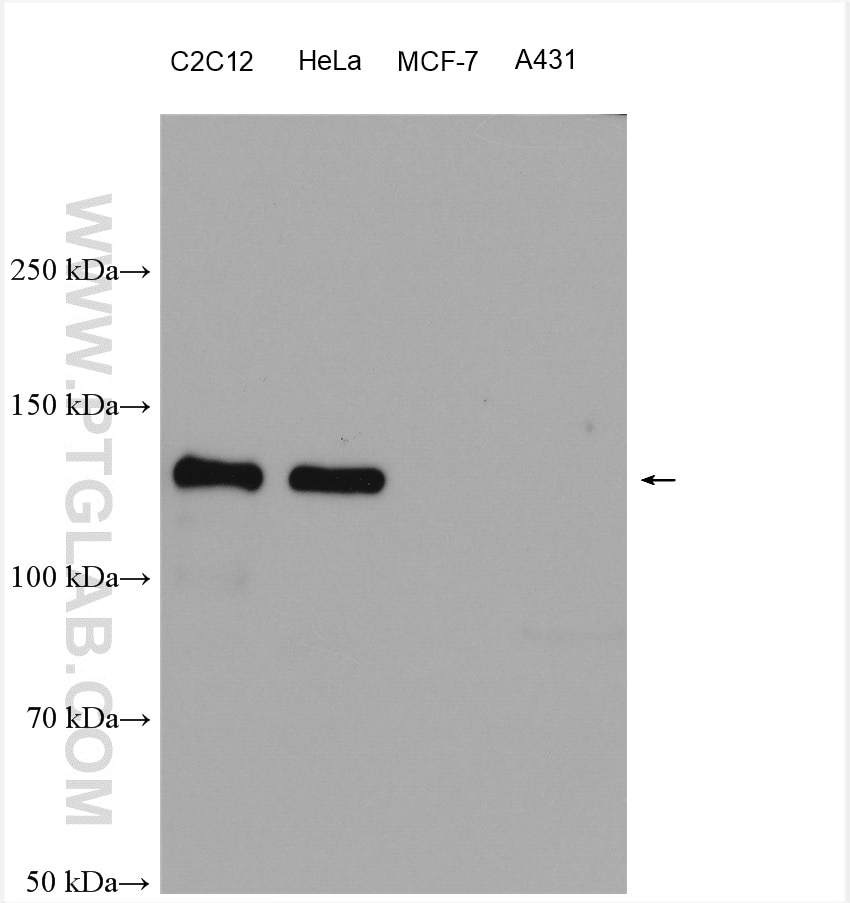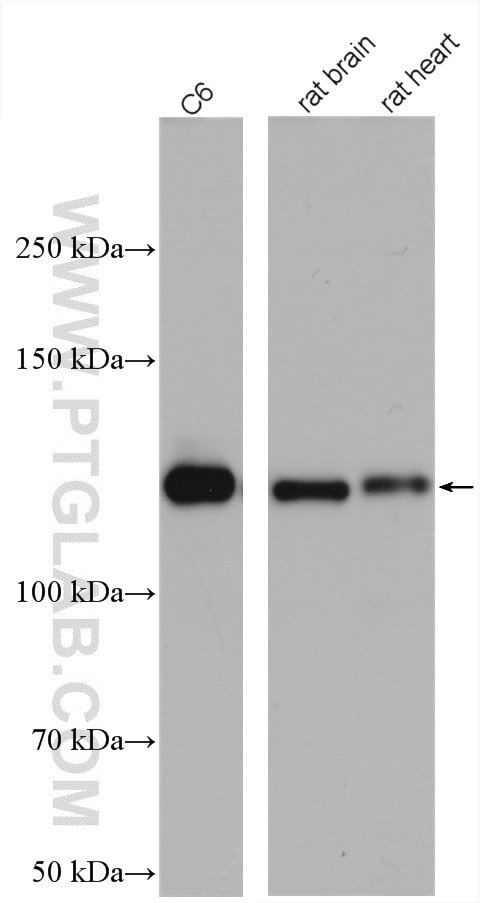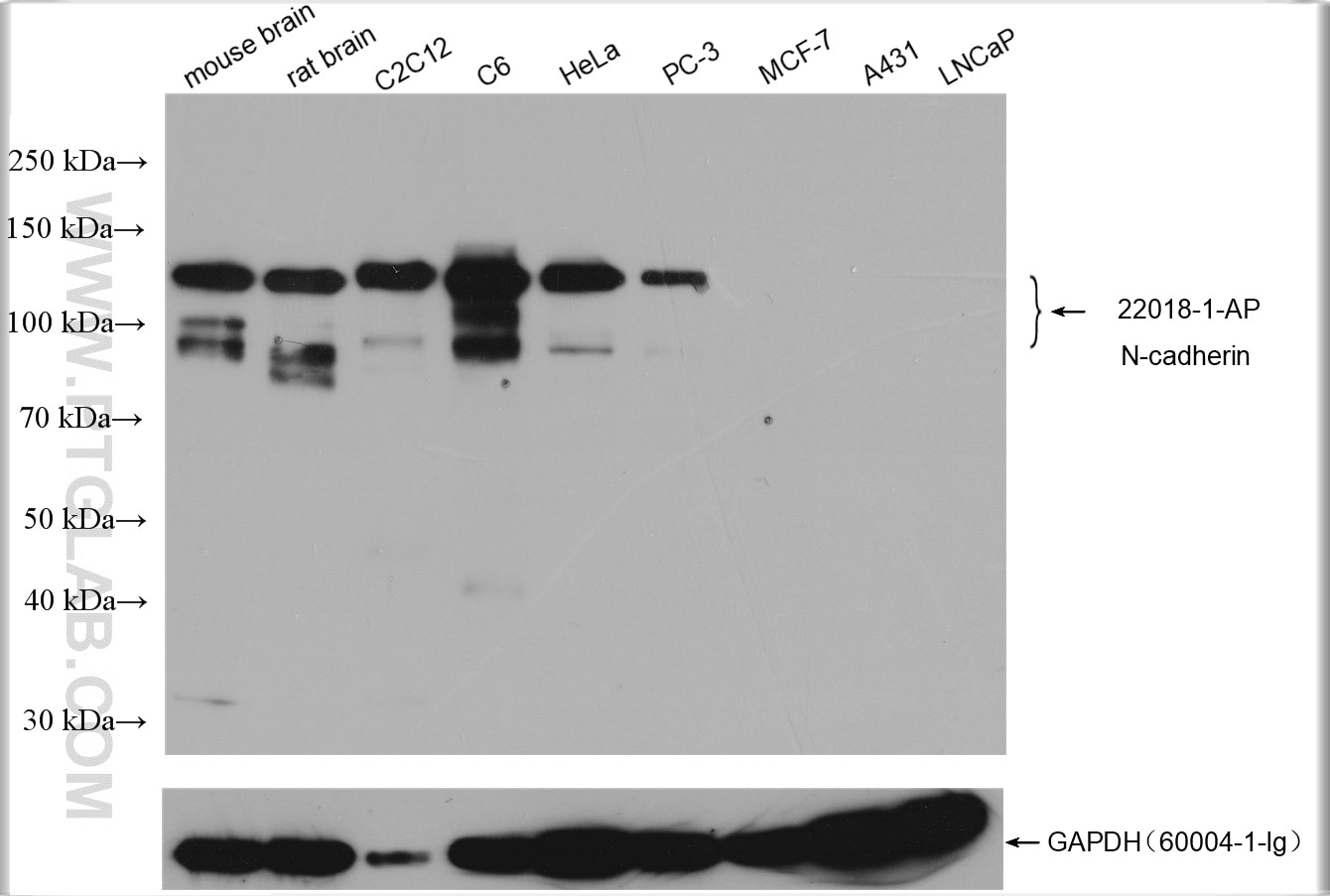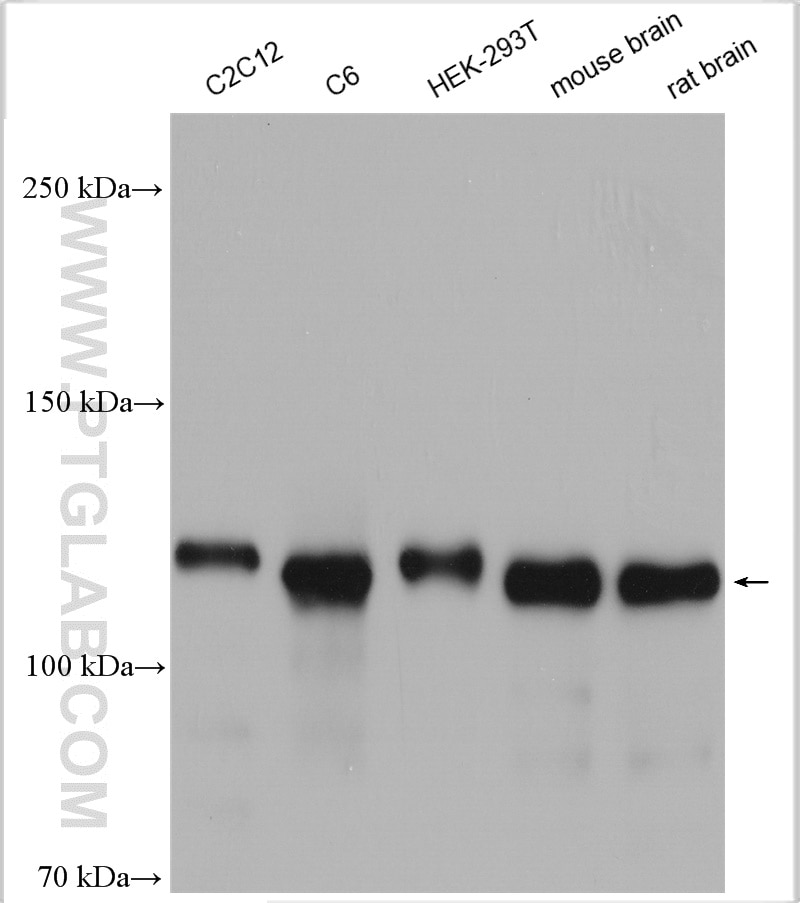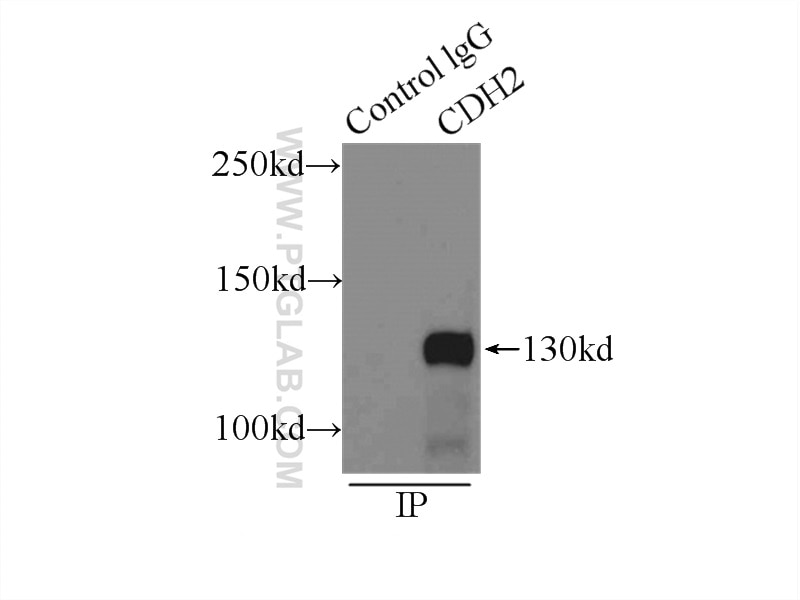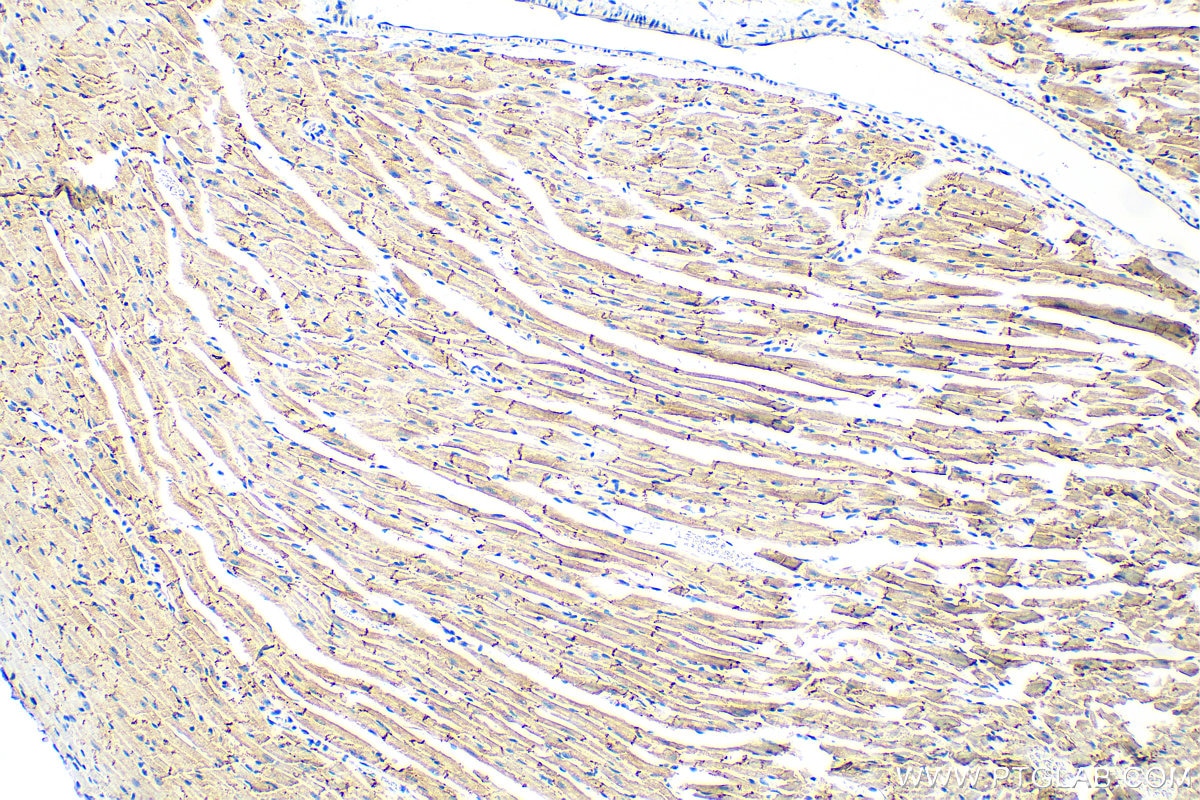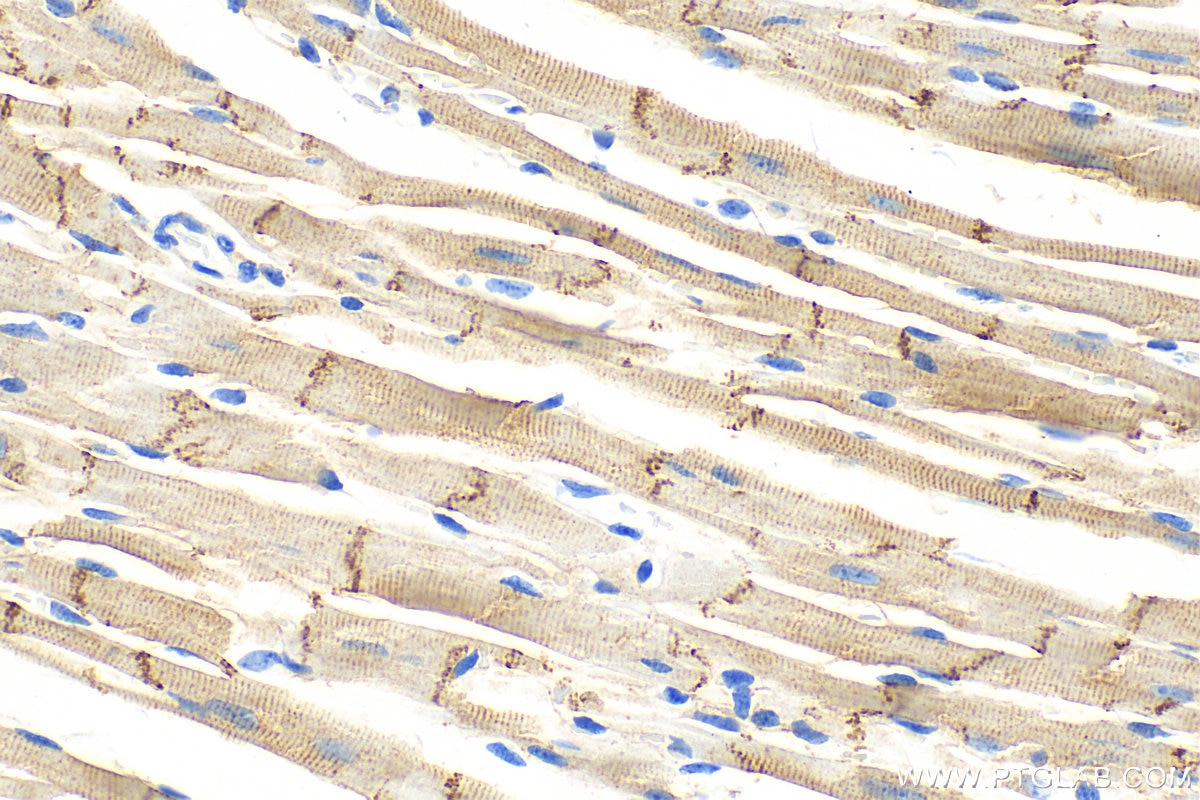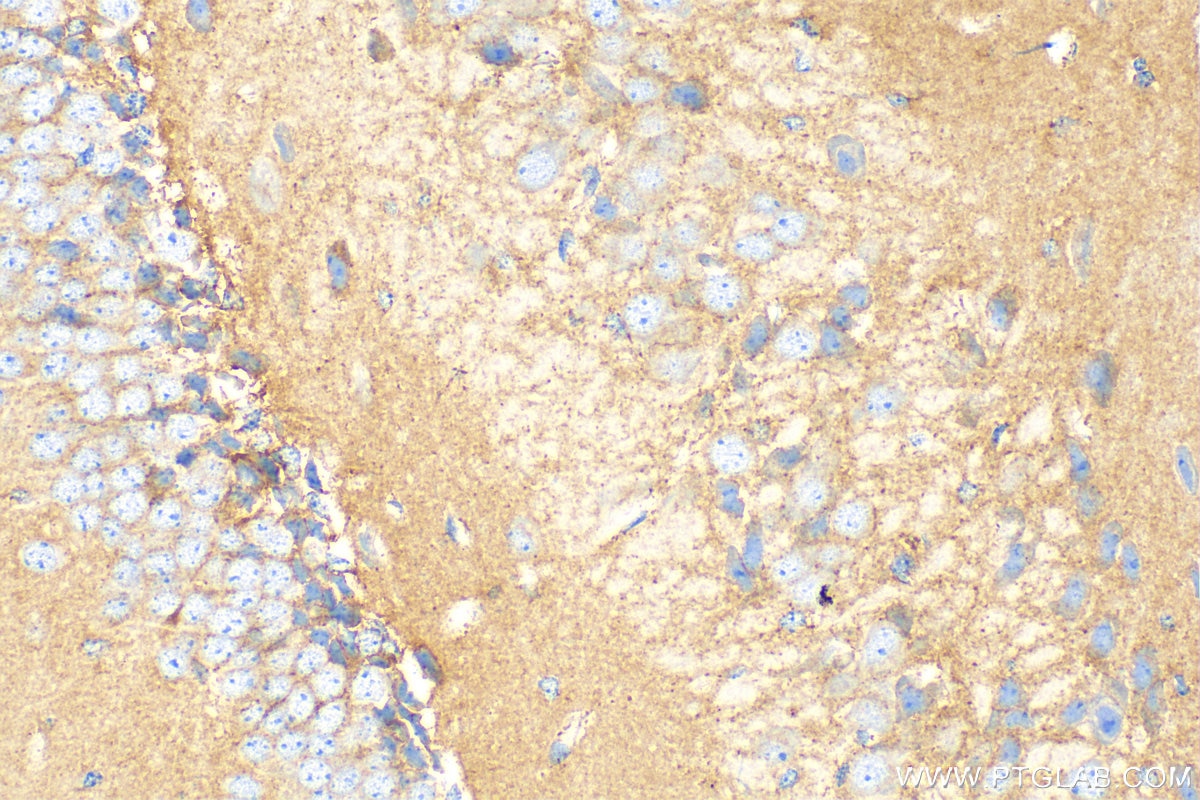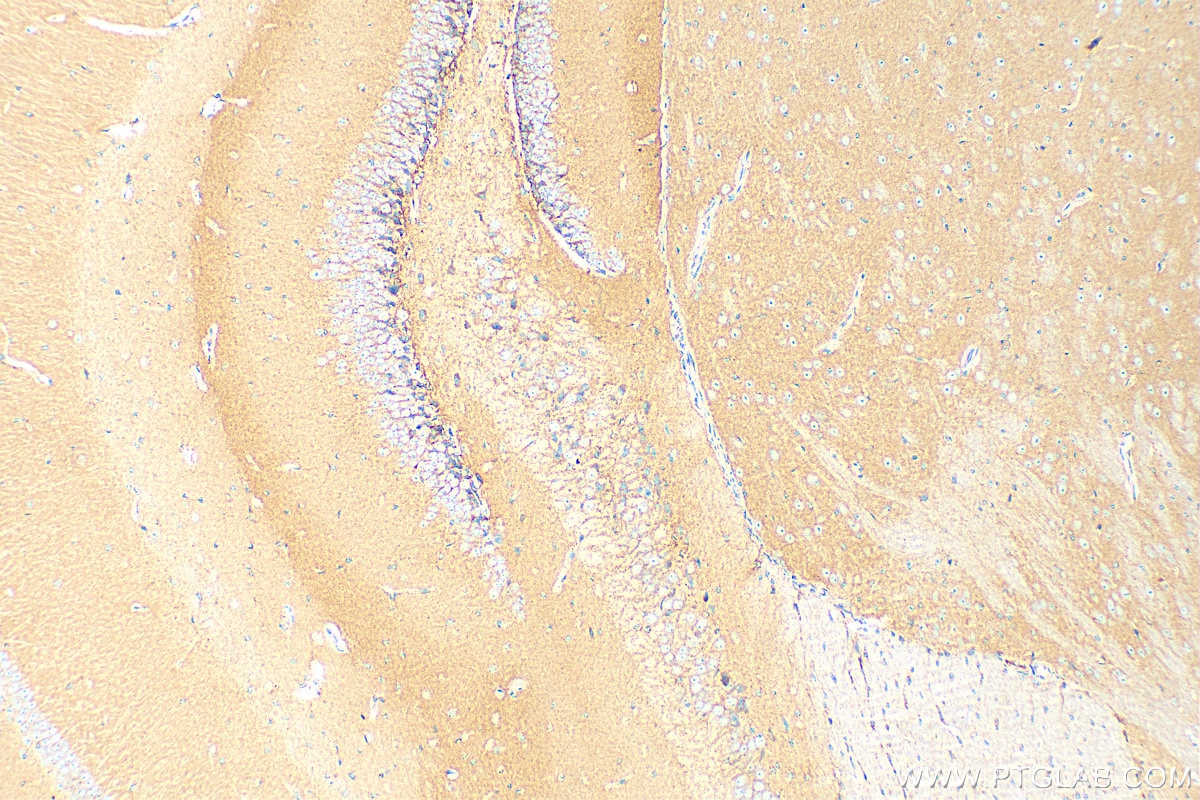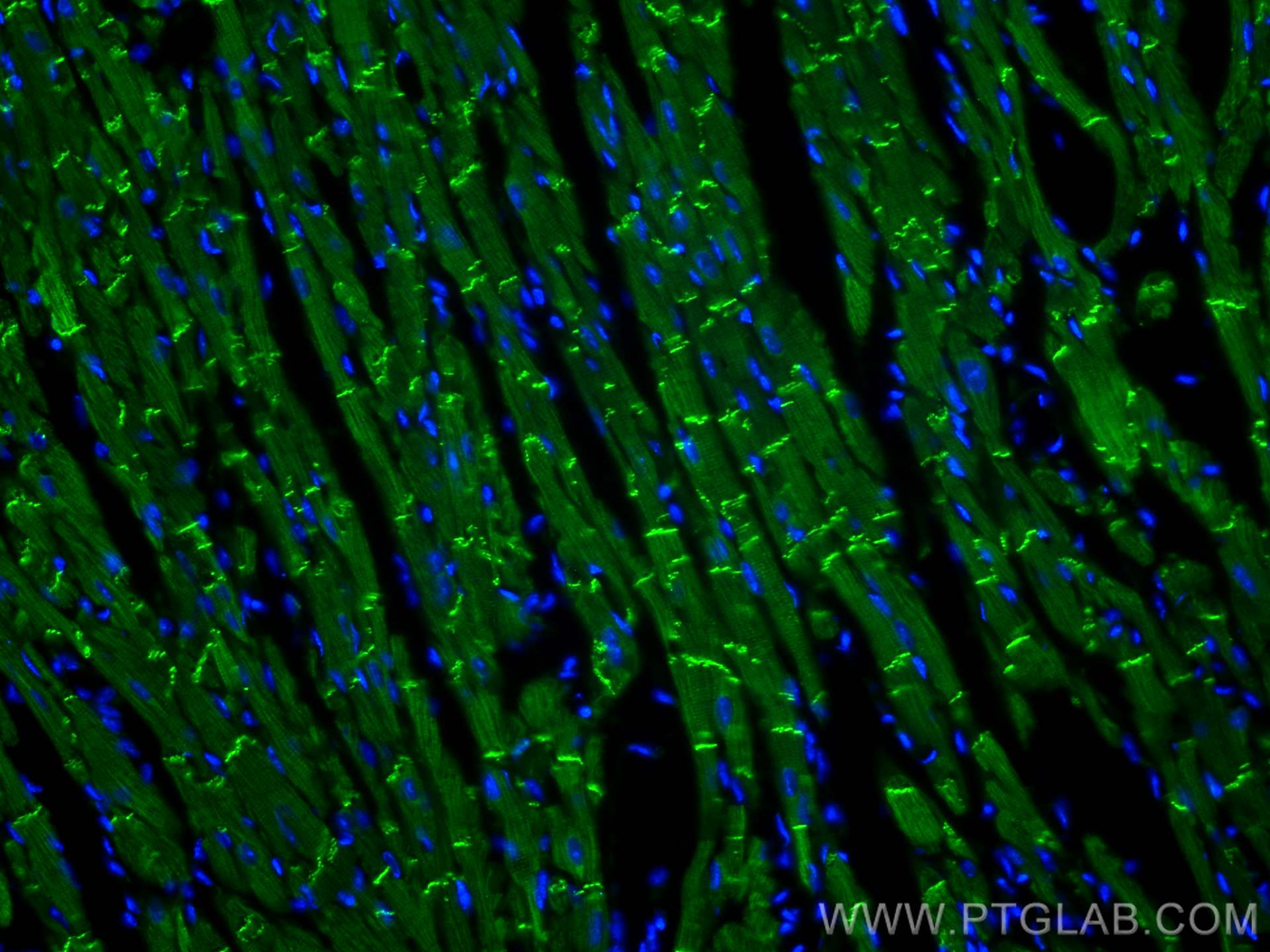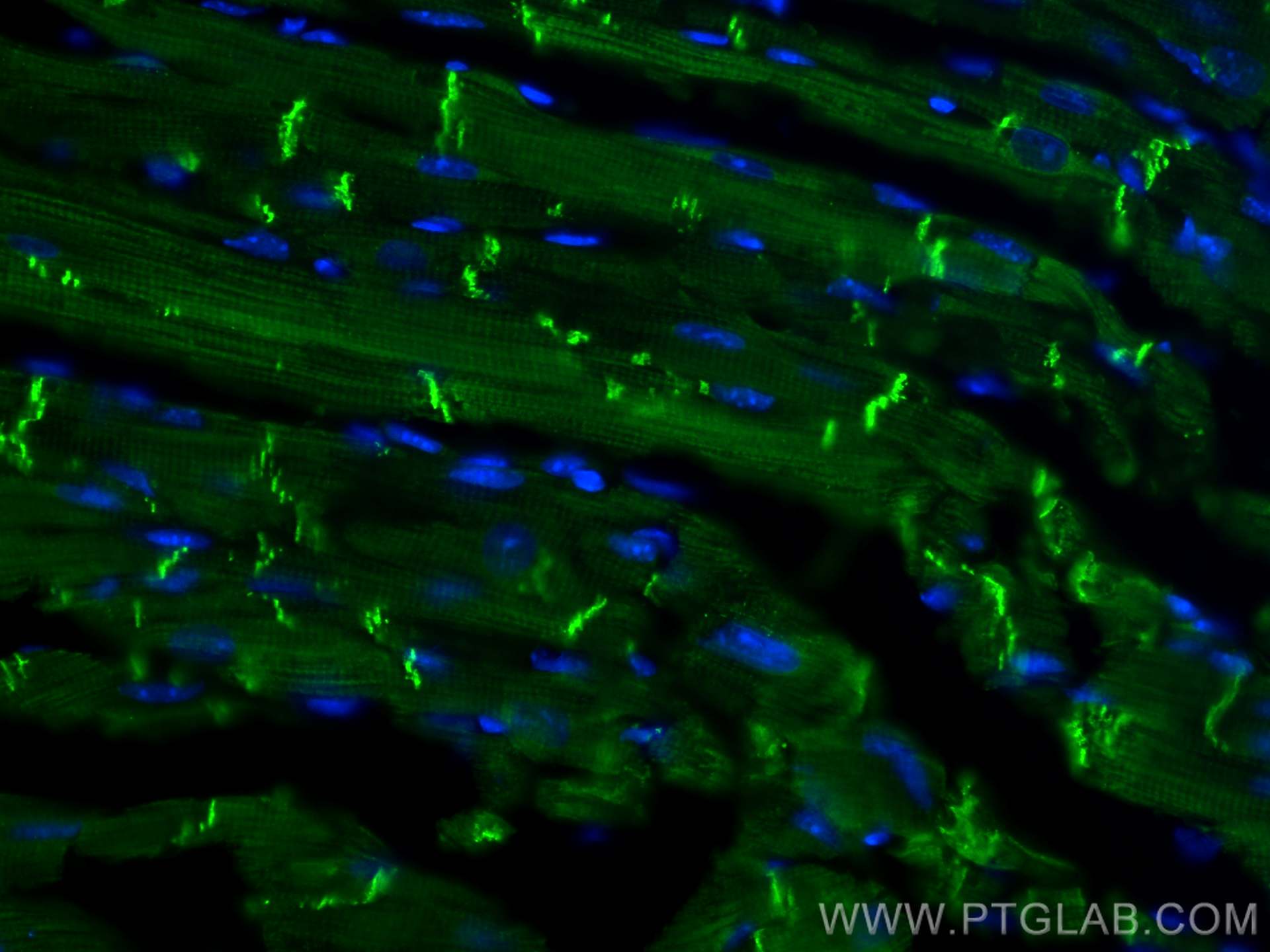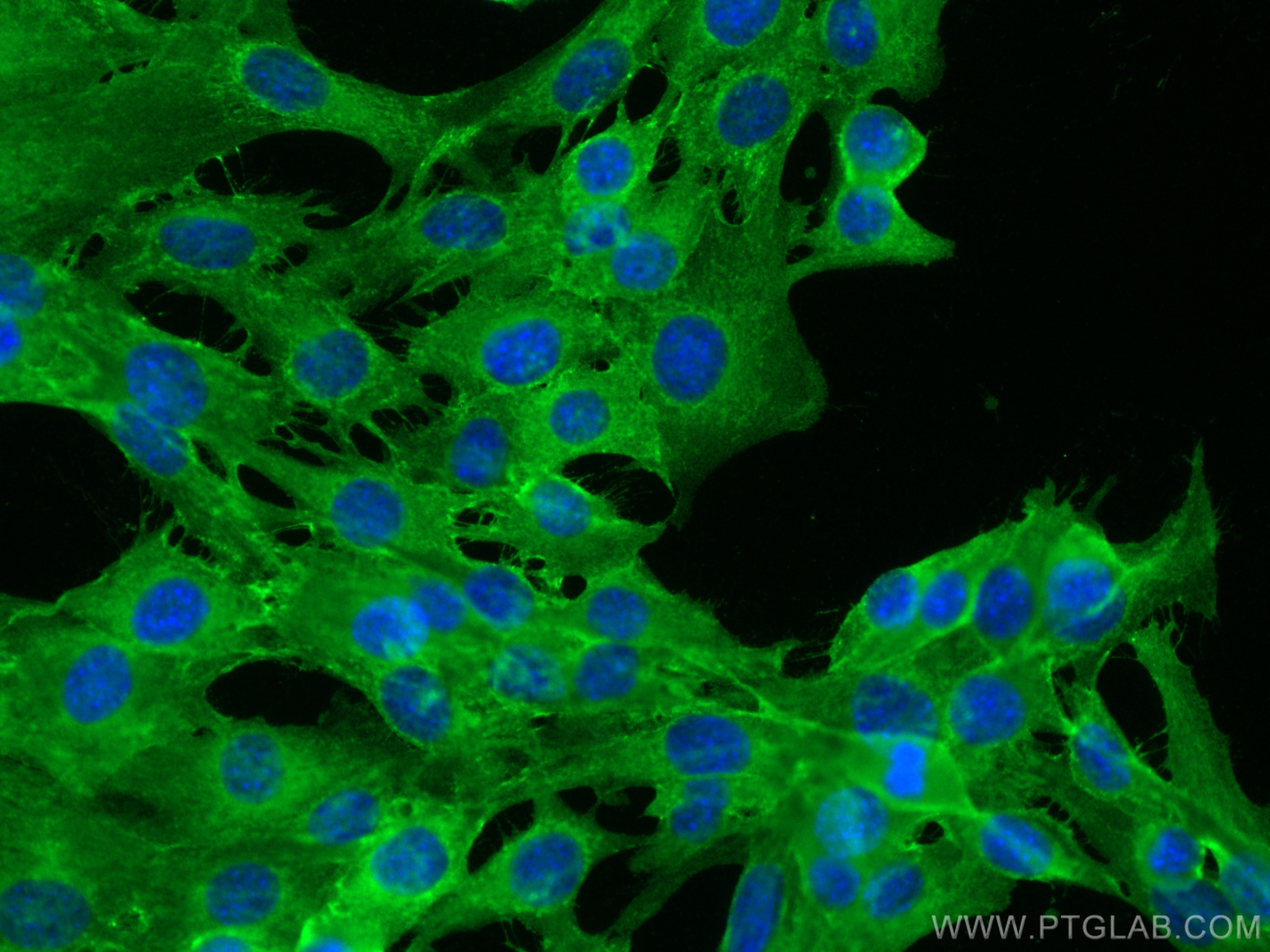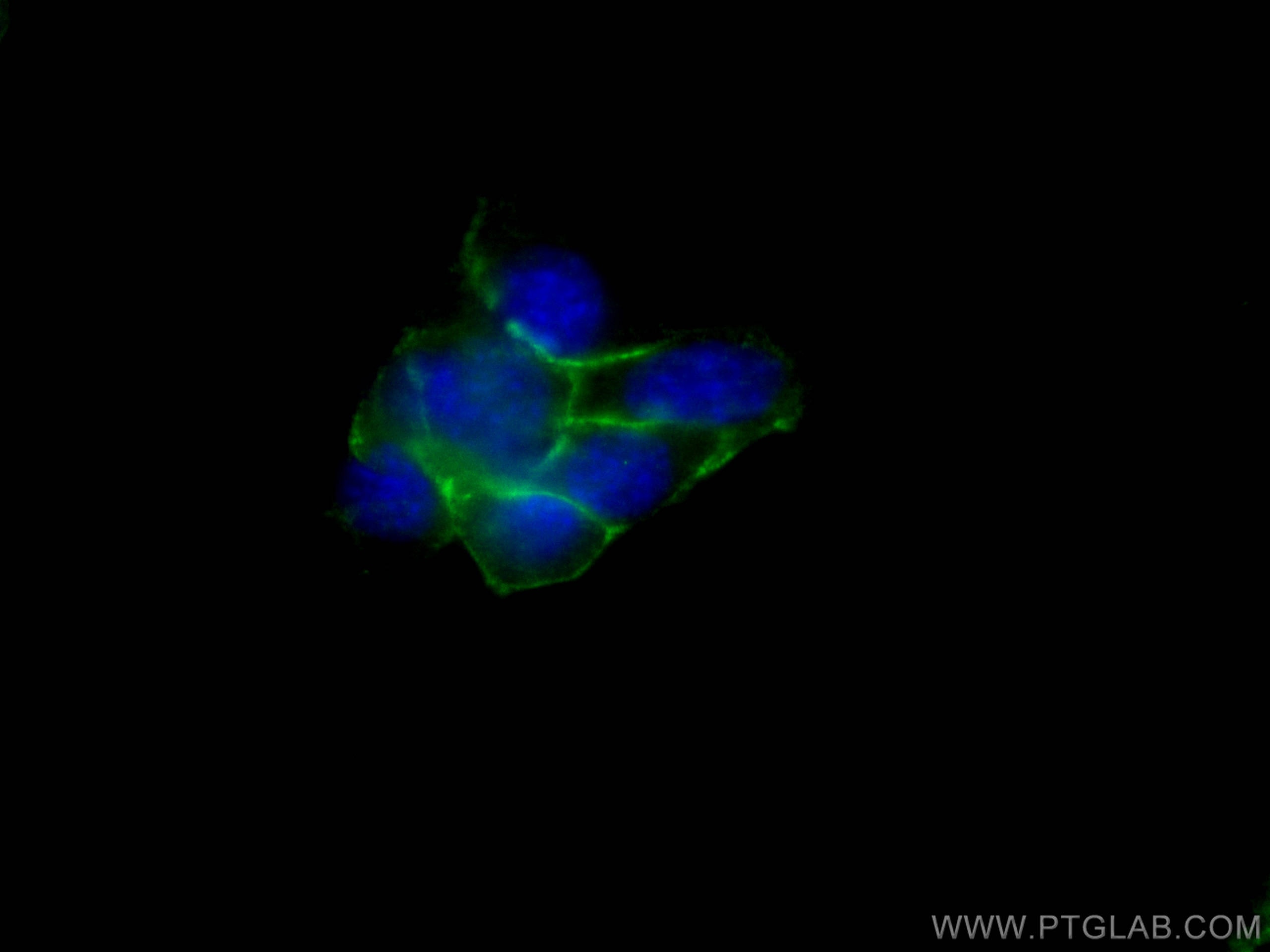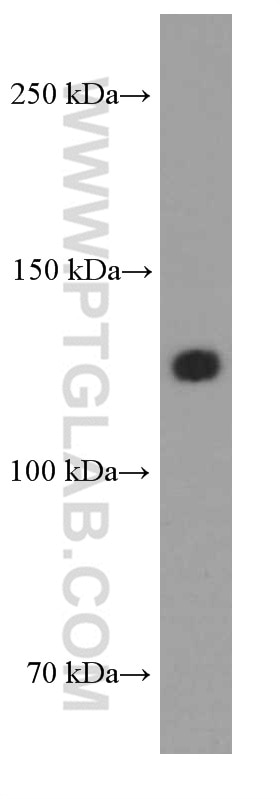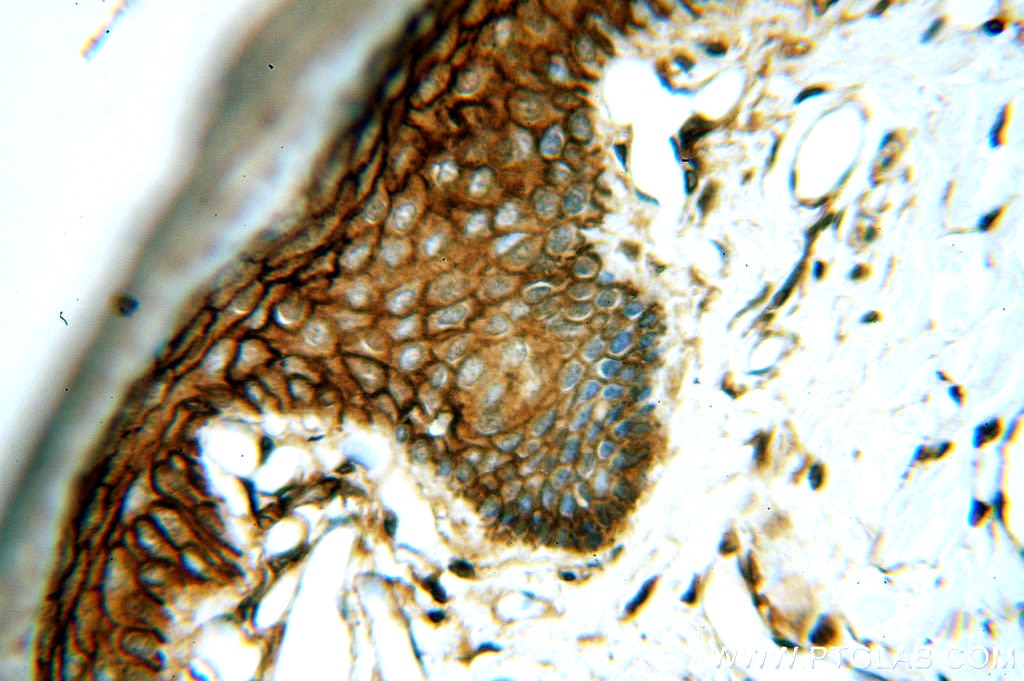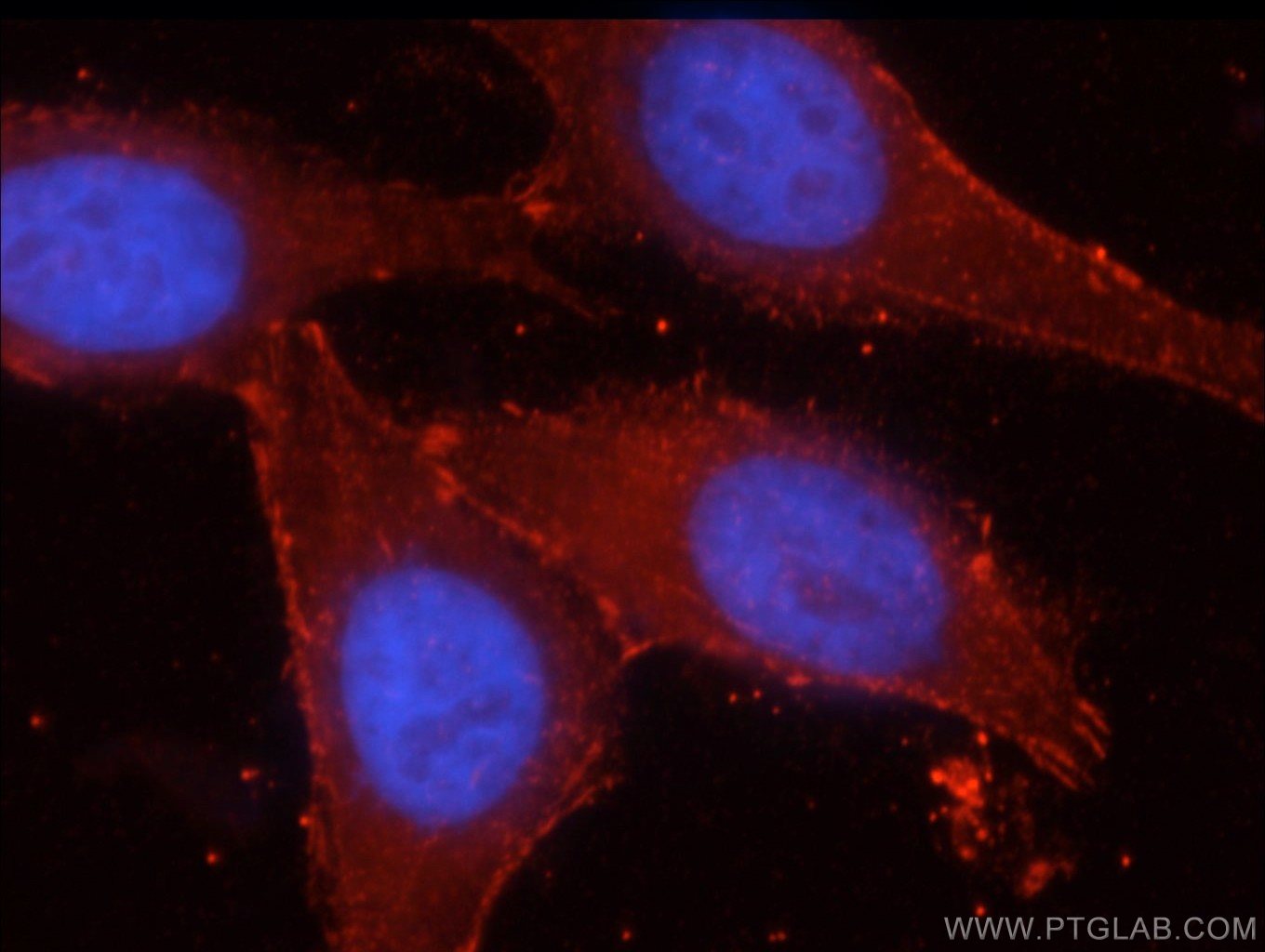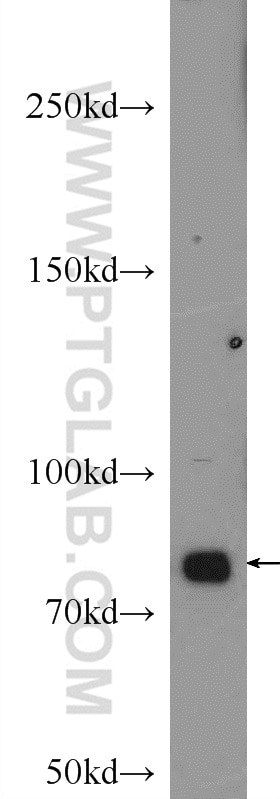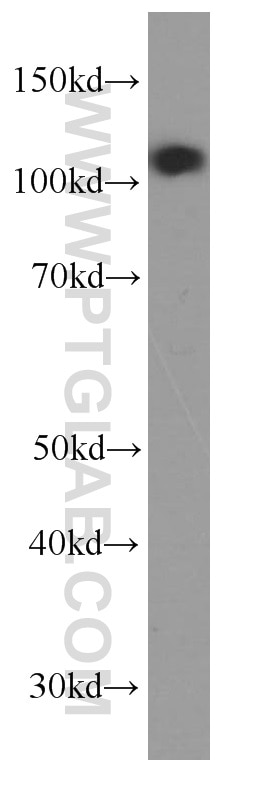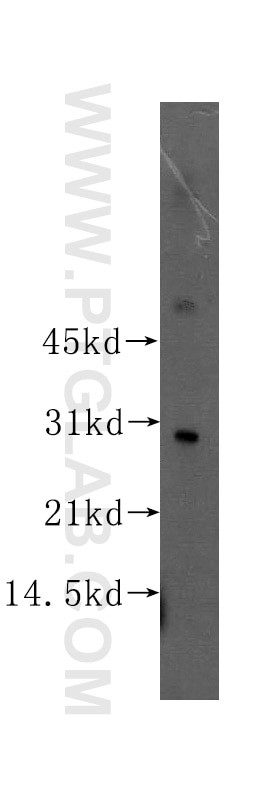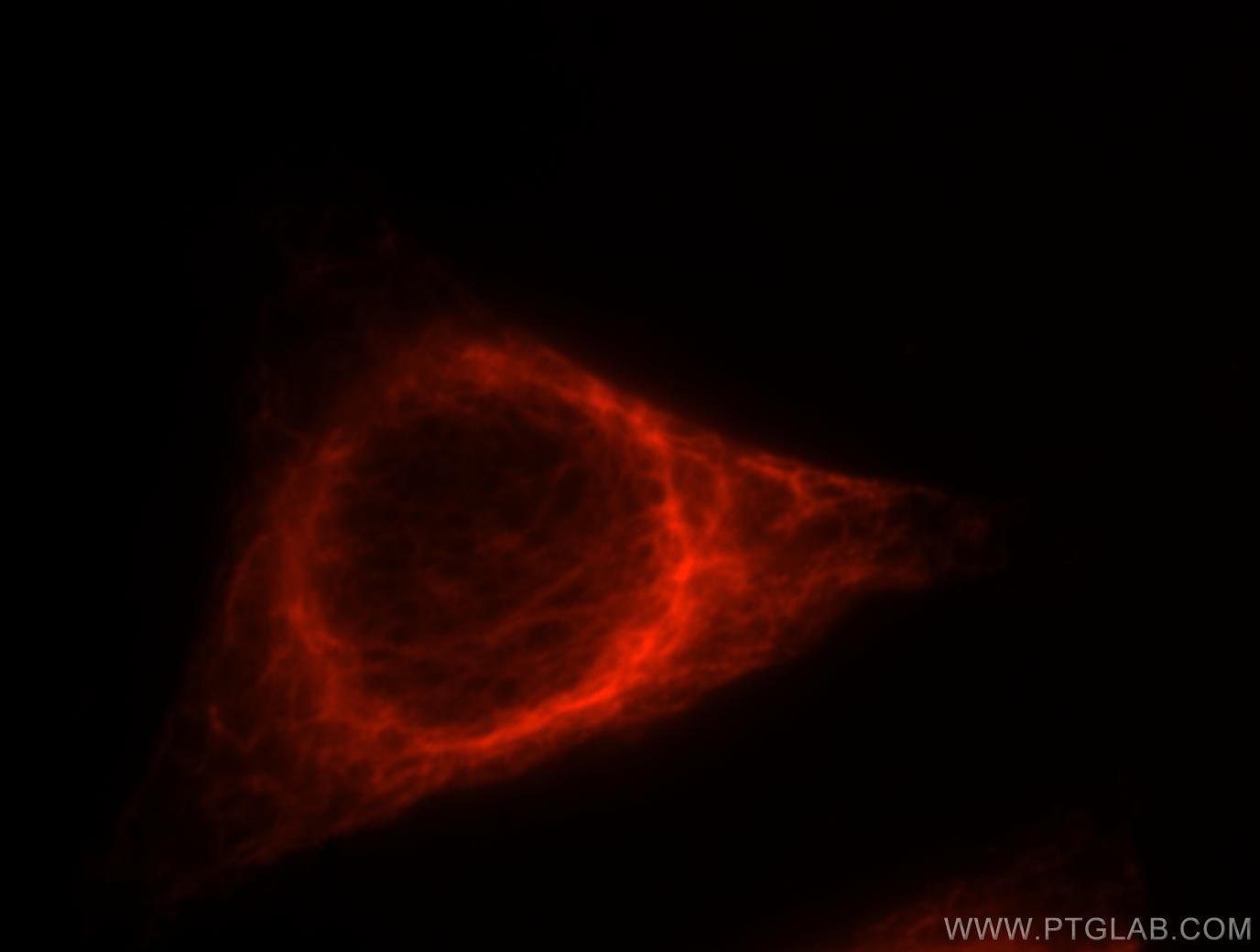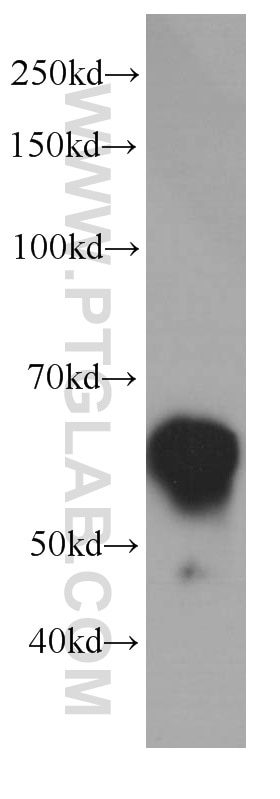- Phare
- Validé par KD/KO
Anticorps Polyclonal de lapin anti-N-cadherin
N-cadherin Polyclonal Antibody for WB, IHC, IF/ICC, IF-P, IP, ELISA
Hôte / Isotype
Lapin / IgG
Réactivité testée
Humain, rat, souris et plus (4)
Applications
WB, IHC, IF/ICC, IF-P, IP, CoIP, ELISA, Cell treatment
Conjugaison
Non conjugué
1065
N° de cat : 22018-1-AP
Synonymes
Galerie de données de validation
Applications testées
| Résultats positifs en WB | tissu cérébral de souris, cellules C2C12, cellules C6, cellules HEK-293, cellules HeLa, cellules PC-3, tissu cardiaque de rat, tissu cérébral de rat |
| Résultats positifs en IP | tissu cérébral de souris |
| Résultats positifs en IHC | tissu cardiaque de souris, tissu cérébral de souris il est suggéré de démasquer l'antigène avec un tampon de TE buffer pH 9.0; (*) À défaut, 'le démasquage de l'antigène peut être 'effectué avec un tampon citrate pH 6,0. |
| Résultats positifs en IF-P | tissu cardiaque de souris, cellules C2C12 |
| Résultats positifs en IF/ICC | cellules C2C12, |
Dilution recommandée
| Application | Dilution |
|---|---|
| Western Blot (WB) | WB : 1:2000-1:16000 |
| Immunoprécipitation (IP) | IP : 0.5-4.0 ug for 1.0-3.0 mg of total protein lysate |
| Immunohistochimie (IHC) | IHC : 1:2000-1:8000 |
| Immunofluorescence (IF)-P | IF-P : 1:50-1:500 |
| Immunofluorescence (IF)/ICC | IF/ICC : 1:200-1:800 |
| It is recommended that this reagent should be titrated in each testing system to obtain optimal results. | |
| Sample-dependent, check data in validation data gallery | |
Applications publiées
| KD/KO | See 3 publications below |
| WB | See 997 publications below |
| IHC | See 132 publications below |
| IF | See 121 publications below |
| FC | See 3 publications below |
| CoIP | See 2 publications below |
Informations sur le produit
22018-1-AP cible N-cadherin dans les applications de WB, IHC, IF/ICC, IF-P, IP, CoIP, ELISA, Cell treatment et montre une réactivité avec des échantillons Humain, rat, souris
| Réactivité | Humain, rat, souris |
| Réactivité citée | rat, bovin, canin, Humain, souris, Hamster, Gecko |
| Hôte / Isotype | Lapin / IgG |
| Clonalité | Polyclonal |
| Type | Anticorps |
| Immunogène | N-cadherin Protéine recombinante Ag16792 |
| Nom complet | cadherin 2, type 1, N-cadherin (neuronal) |
| Masse moléculaire calculée | 906 aa, 100 kDa |
| Poids moléculaire observé | 130 kDa |
| Numéro d’acquisition GenBank | BC036470 |
| Symbole du gène | N-cadherin |
| Identification du gène (NCBI) | 1000 |
| Conjugaison | Non conjugué |
| Forme | Liquide |
| Méthode de purification | Purification par affinité contre l'antigène |
| Tampon de stockage | PBS avec azoture de sodium à 0,02 % et glycérol à 50 % pH 7,3 |
| Conditions de stockage | Stocker à -20°C. Stable pendant un an après l'expédition. L'aliquotage n'est pas nécessaire pour le stockage à -20oC Les 20ul contiennent 0,1% de BSA. |
Informations générales
Neuronal cadherin (N-cadherin), also known as cadherin-2 (CDH2), is a calcium-binding protein that mediates cell-cell adhesions of neuronal and some non-neuronal cell types.
What is the molecular weight of N-cadherin? Is N-cadherin post-translationally modified?
The molecular weight of mature N-cadherin is 127 kDa. N-cadherin is synthesized in a precursor form that undergoes proteolytic cleavage by furin at the Golgi apparatus. Additionally, it can be phosphorylated by casein kinase II and N-glycosylated, which affects its stability (PMID: 12604612 and 19846557).
What is the subcellular localization of N-cadherin? What is the tissue expression pattern of N-cadherin?
N-cadherin is an integral membrane protein present at the plasma membrane, forming adherens junctions. It is widely expressed in the nervous system, where it flanks the active zone of synapses and is important for synapse formation and remodeling. It is also present in the lens, skeletal, and cardiac muscles (PMID: 3857614). In the muscle, N-cadherin plays a role in myoblast differentiation, while in the heart it is required for the formation of intercalated discs. Additionally, N-cadherin is present in blood vessels, promoting angiogenesis by forming adhesive complexes between endothelial cells and pericytes (PMID: 24521477).
What is the role of N-cadherin during the epithelial-mesenchymal transition (EMT)?
EMT is a crucial process during gastrulation that leads to the formation of mesenchymal cells. It is marked by decreased expression of E-cadherin and upregulation of N-cadherin, which promotes cell migration (PMID: 23481201). Similarly, upregulation of N-cadherin is observed in many cancer cell types and is associated with increased invasiveness and metastasis.
Protocole
| Product Specific Protocols | |
|---|---|
| WB protocol for N-cadherin antibody 22018-1-AP | Download protocol |
| IHC protocol for N-cadherin antibody 22018-1-AP | Download protocol |
| IF protocol for N-cadherin antibody 22018-1-AP | Download protocol |
| IP protocol for N-cadherin antibody 22018-1-AP | Download protocol |
| Standard Protocols | |
|---|---|
| Click here to view our Standard Protocols |
Publications
| Species | Application | Title |
|---|---|---|
Mol Cancer lncRNA ZNRD1-AS1 promotes malignant lung cell proliferation, migration, and angiogenesis via the miR-942/TNS1 axis and is positively regulated by the m6A reader YTHDC2 | ||
ACS Nano Cancer-Erythrocyte Hybrid Membrane-Camouflaged Magnetic Nanoparticles with Enhanced Photothermal-Immunotherapy for Ovarian Cancer. | ||
Nat Commun Schwann cells regulate tumor cells and cancer-associated fibroblasts in the pancreatic ductal adenocarcinoma microenvironment | ||
Mol Cancer CircGPR137B/miR-4739/FTO feedback loop suppresses tumorigenesis and metastasis of hepatocellular carcinoma. | ||
Nat Commun ICAM1 initiates CTC cluster formation and trans-endothelial migration in lung metastasis of breast cancer. | ||
J Exp Clin Cancer Res N6-methyladenosine-modified circSLCO1B3 promotes intrahepatic cholangiocarcinoma progression via regulating HOXC8 and PD-L1 |
Avis
The reviews below have been submitted by verified Proteintech customers who received an incentive forproviding their feedback.
FH Greta (Verified Customer) (02-08-2024) | Good antibody for WB
|
FH Sarah (Verified Customer) (01-04-2024) | Signal at 1:500 was very weak and grainy by immunofluorescence of fixed HCT116 cells.
|
FH Sarah (Verified Customer) (02-09-2023) | Worked well for western blot of mouse brain for 1hr at room temp
|
FH Ralph (Verified Customer) (05-17-2022) | The antibody works well in indirect immunofluorescence, stains the cell membrane.
|
FH Saba (Verified Customer) (02-21-2022) | The band intensity of the antibody is so sharp even in very diluted concentration.
|
FH Lianjie (Verified Customer) (07-26-2019) | Works very well.
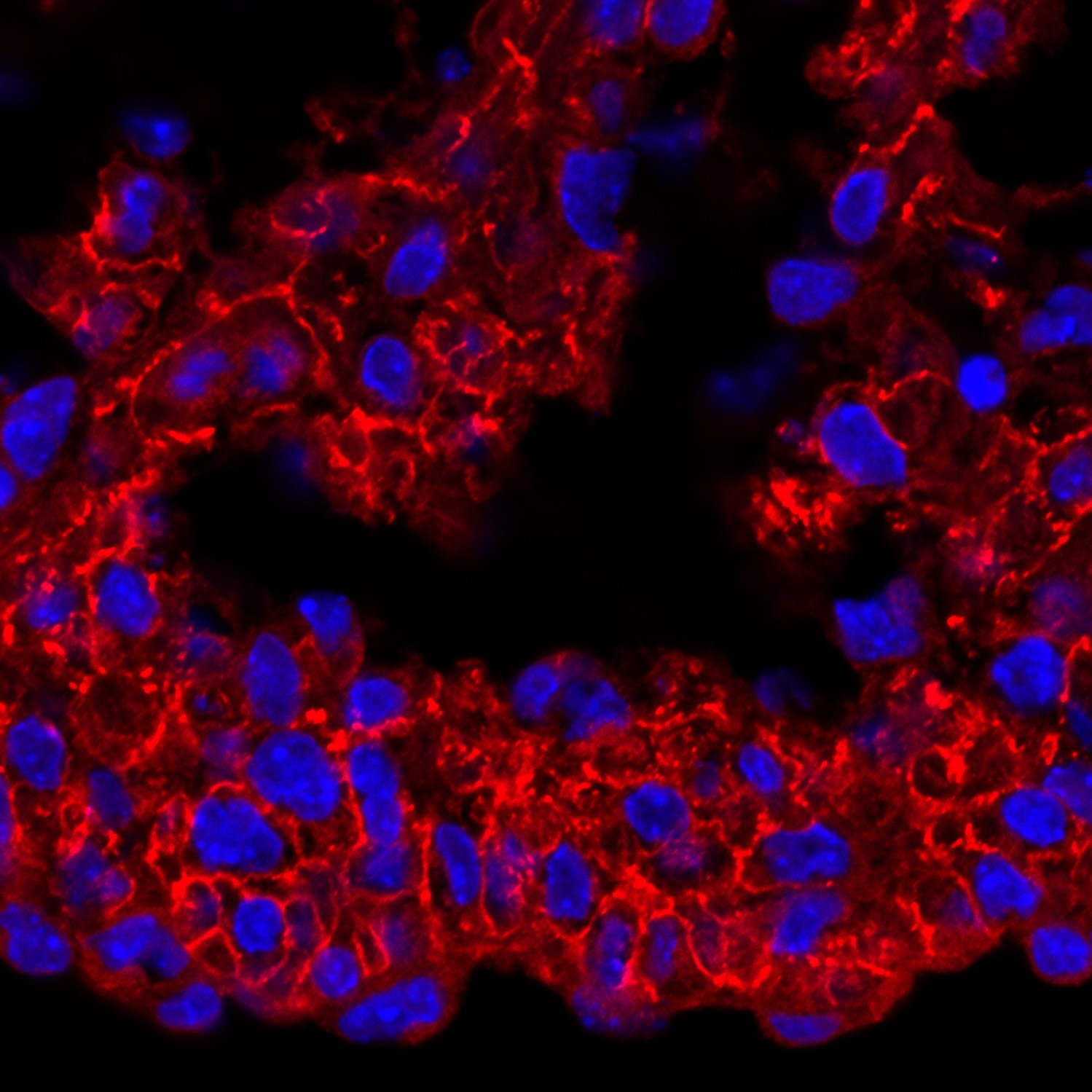 |
FH Aurelie (Verified Customer) (06-13-2019) | Great antibody, no background, works also in human U2OS and primary fibroblasts with the same efficiency.
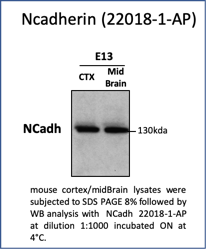 |
